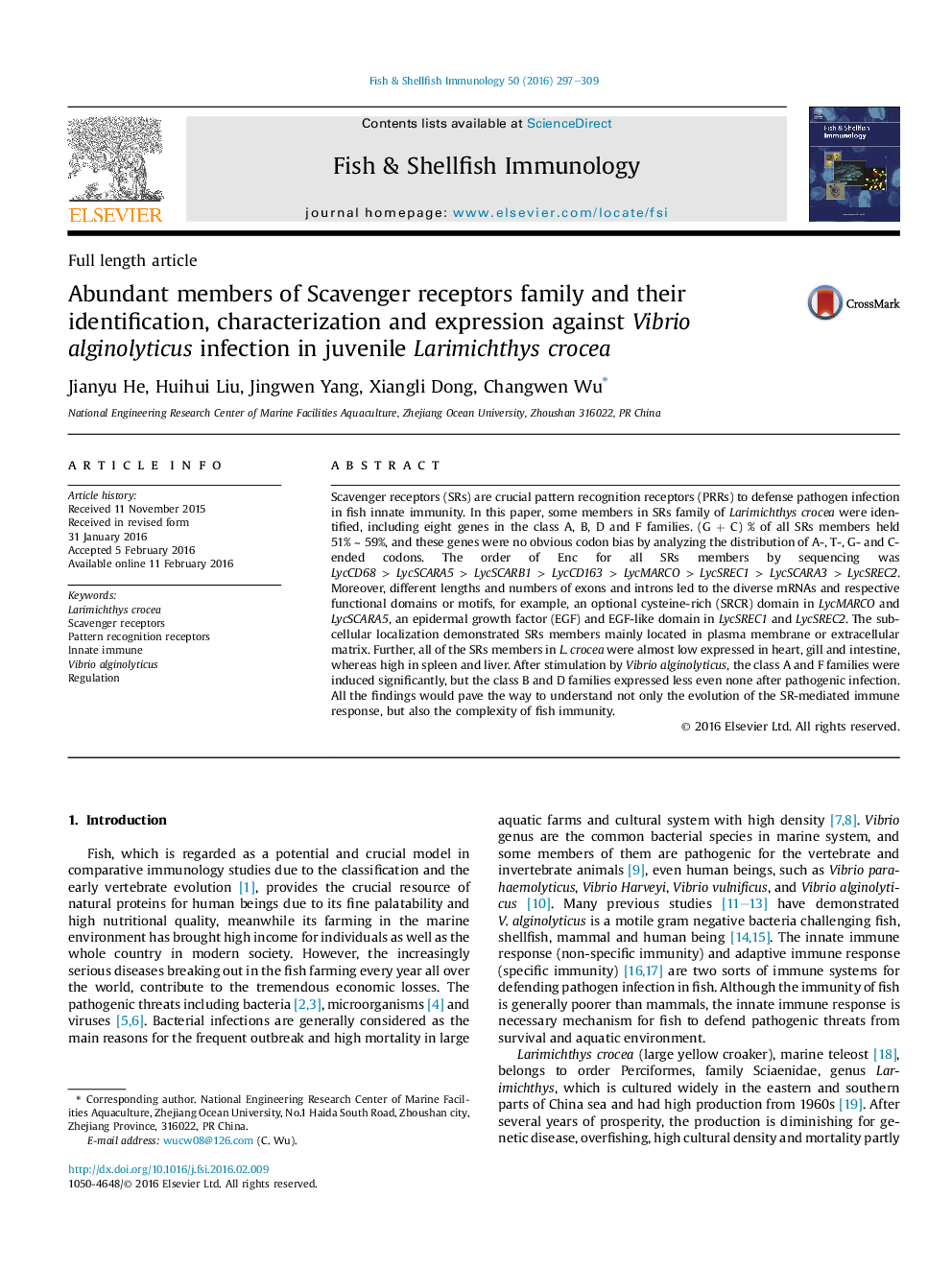| کد مقاله | کد نشریه | سال انتشار | مقاله انگلیسی | نسخه تمام متن |
|---|---|---|---|---|
| 2430694 | 1553624 | 2016 | 13 صفحه PDF | دانلود رایگان |

• Eight members of Scavenger receptors were identified in Larimichthys crocea.
• No obvious codon bias were found in SRs family.
• SRCR and EGF domains might relate to binding and cleaning pathogenic bacteria.
• The sub-cellular mainly located in plasma membrane or extracellular matrix.
• The class A and F families were induced significantly.
Scavenger receptors (SRs) are crucial pattern recognition receptors (PRRs) to defense pathogen infection in fish innate immunity. In this paper, some members in SRs family of Larimichthys crocea were identified, including eight genes in the class A, B, D and F families. (G + C) % of all SRs members held 51% ∼ 59%, and these genes were no obvious codon bias by analyzing the distribution of A-, T-, G- and C-ended codons. The order of Enc for all SRs members by sequencing was LycCD68 > LycSCARA5 > LycSCARB1 > LycCD163 > LycMARCO > LycSREC1 > LycSCARA3 > LycSREC2. Moreover, different lengths and numbers of exons and introns led to the diverse mRNAs and respective functional domains or motifs, for example, an optional cysteine-rich (SRCR) domain in LycMARCO and LycSCARA5, an epidermal growth factor (EGF) and EGF-like domain in LycSREC1 and LycSREC2. The sub-cellular localization demonstrated SRs members mainly located in plasma membrane or extracellular matrix. Further, all of the SRs members in L. crocea were almost low expressed in heart, gill and intestine, whereas high in spleen and liver. After stimulation by Vibrio alginolyticus, the class A and F families were induced significantly, but the class B and D families expressed less even none after pathogenic infection. All the findings would pave the way to understand not only the evolution of the SR-mediated immune response, but also the complexity of fish immunity.
Journal: Fish & Shellfish Immunology - Volume 50, March 2016, Pages 297–309